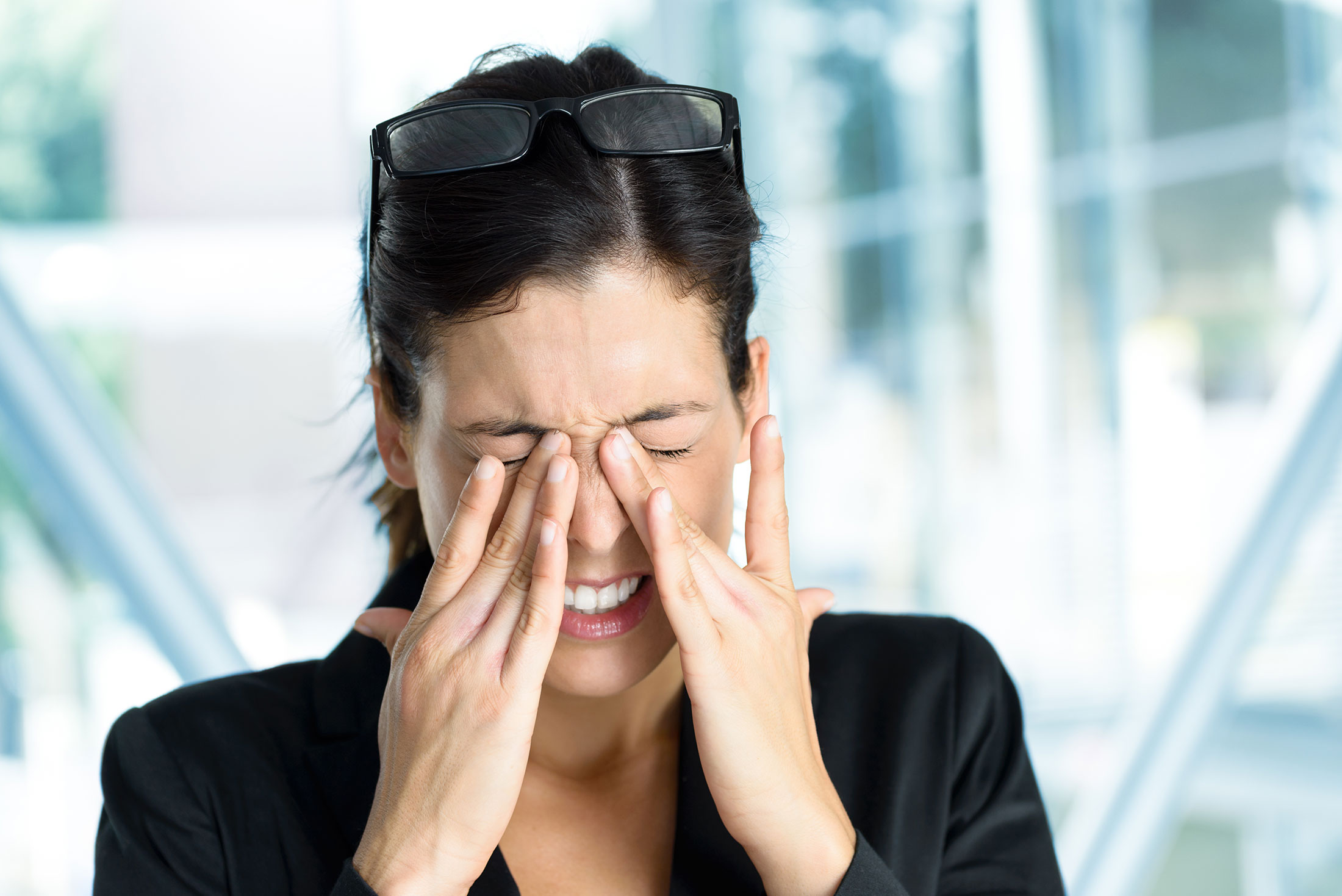Dry Eye

Dry Eye
Dry eye is a common eye condition that affects millions of people worldwide, causing discomfort and irritation in the eyes. At Palmer Eye Center, we specialize in the diagnosis and treatment of dry eye syndrome, using a personalized approach to help you find relief from your symptoms.
What is Dry Eye?
Dry eye is a common eye condition that occurs when there is an issue with the tear film that usually lubricates and protects the surface of the eye. The tear film is made up of three layers: a mucus layer, a watery layer, and an oily layer.
Each layer serves a specific function in keeping the eye surface smooth and clear, protecting the eye from infection, and ensuring your vision is clear. If you have dry eye, the quality or quantity of your tears is insufficient.
This often leads to various bothersome symptoms. Dry eye is more common in women than in men, and your chances of developing it increase with age.
Various factors can make you more likely to develop dry eye, including medications, hormonal changes, environmental factors, and underlying medical conditions. The symptoms of dry eye can range from mild to severe and include dryness, redness, itching, burning, and sensitivity to light.
In some cases, dry eyes can also cause blurry vision or difficulty wearing contact lenses. If left untreated, dry eye can lead to complications, including damage to your cornea, permanent vision problems, and an increased risk of eye infections.
If you experience symptoms of dry eye, it is essential to visit your eye doctor at Palmer Eye Center for a thorough evaluation, as early diagnosis and treatment can help to prevent complications and improve your quality of life.
How Do Eye Doctors Diagnose Dry Eye?
If you are experiencing symptoms of dry eye, your eye doctor at Palmer Eye Center will evaluate your symptoms, medical history, and lifestyle. In order to determine if dry eye syndrome is causing your symptoms, your eye doctor will perform a thorough evaluation of your eyes.
They may perform various tests such as Schirmer’s test, which measures your tear production; tear breakup time (TBUT) test, which tells them how stable your tear film is; and Meibomian gland evaluation to confirm the diagnosis. Determining the root cause of your dry eye syndrome will help your eye doctor develop a customized treatment plan that will be best suited to improve your symptoms.
Take Our Dry Eye Self-Test
How Do Eye Doctors Treat Dry Eye?
If your eye doctor diagnoses you with dry eye, they will develop a treatment plan to help improve your symptoms. There are various treatment options available to manage dry eye, and the choice of treatment will depend on the severity and underlying cause of the condition.
Artificial Tears
Artificial tears are one of the most common treatments for dry eye and are available over the counter without a prescription. They come in the form of eye drops or ointments and work by lubricating the surface of the eye, reducing dryness and irritation.
Artificial tears contain a mixture of water, salts, and lubricants that mimic the natural tears produced by the eyes. They can be used as often as needed and are particularly helpful for mild to moderate cases of dry eye.
Your eye doctor at Palmer Eye Center will help you choose the right type of artificial tears for your specific needs, including a brand and formula that will work best for you. It is also important to follow the recommended dosage and application instructions to avoid any potential side effects or complications and to ensure you are receiving the maximum benefit from them.
While artificial tears are generally safe and effective, they may not be enough to manage severe cases of dry eye. In these cases, your eye doctor may recommend additional treatment options, such as prescription eye drops, to provide more significant relief.
Warm Compresses
Warm compresses are another effective treatment option for dry eyes, particularly for individuals with Meibomian gland dysfunction, a condition that affects the glands in the eyelids that produce oil to help lubricate the eyes. This dysfunction can lead to poor-quality tears and dry eye symptoms.
Using a warm compress can help to unclog the Meibomian glands and improve oil production, leading to better eye lubrication and improving the stability of your tear film. To use a warm compress, start by soaking a clean cloth in warm water and wringing out the excess.
Then, place the warm cloth over your closed eyes for ten to fifteen minutes, re-warming the cloth as needed. In addition to using warm compresses, your eye doctor may also recommend eyelid massage or other techniques to help improve the function of the Meibomian glands.
Prescription Eye Drops
Prescription eye drops are another excellent treatment option for some individuals with moderate to severe dry eye. These eye drops contain medications that can reduce inflammation, increase tear production, or improve the quality of tears.
Your eye doctor will determine which type of eye drops will work best for you based on your specific needs and medical history. Restasis and Xiidra are common types of prescription eye drops for dry eye.
Restasis contains cyclosporine, which reduces inflammation and increases tear production, while Xiidra contains lifitegrast, which reduces inflammation and improves the quality of tears. Steroid eye drops may also be used in severe cases, but only for a short period due to their significant side effects.
It is important to follow your eye doctor’s instructions carefully when using prescription eye drops to avoid complications. Regular follow-up appointments may also be necessary to monitor progress and adjust the treatment plan as needed.

Are you experiencing symptoms of dry eye? Schedule an appointment at Palmer Eye Center in Tallahassee, FL, today!


